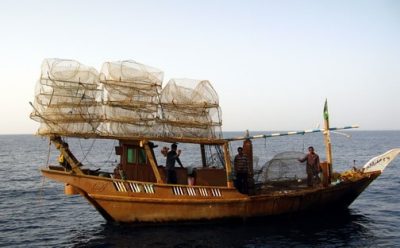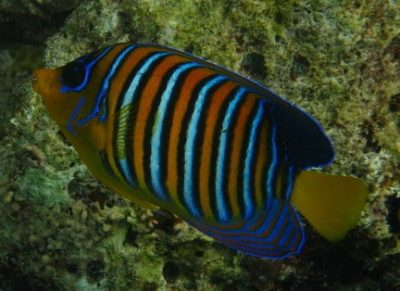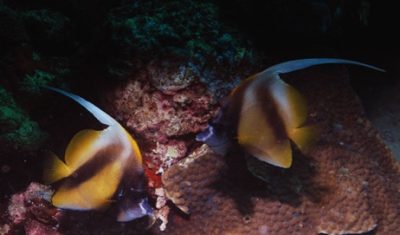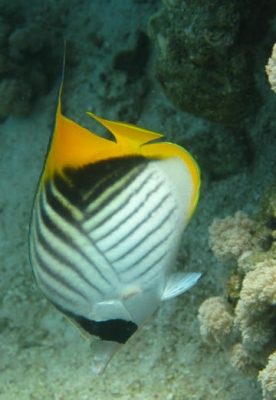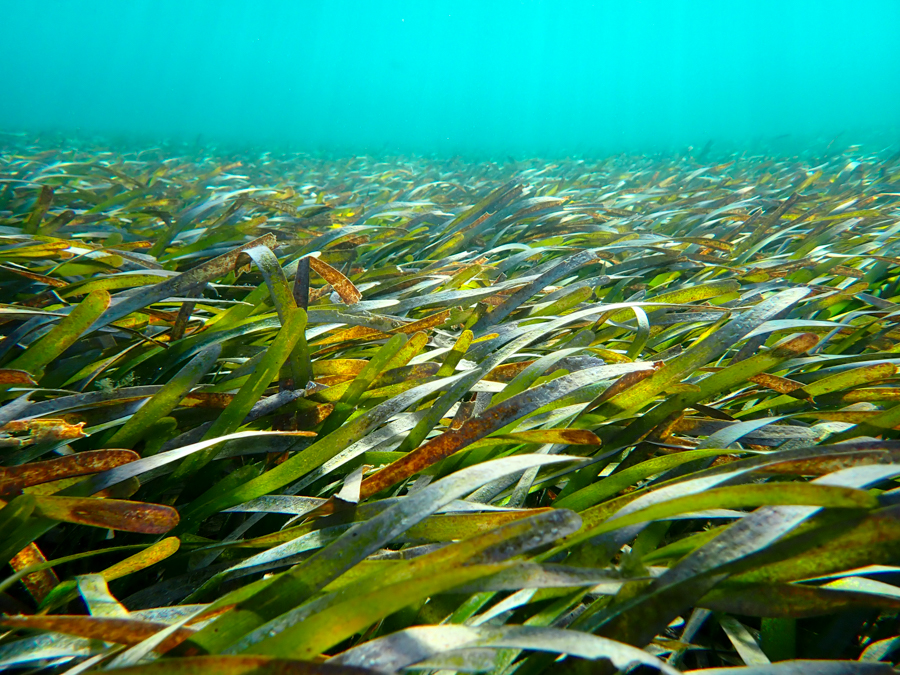I’ve spent a lot of time talking about the corals, how they are faring, and what invertebrates are eating them. I’ve only briefly mentioned fish, even though they are the showcase of the Red Sea. From charismatic megafuana like the elasmobranches (fish with a soft cartilaginous skeleton), such as the sharks, rays), to the 2 cm long gobies, the Red Sea is home to over 550 species of fishes.
Among the most conspicuous and colorful members of the reef fish community are the butterflyfishes and angelfishes. There are only eight angelfish reported in the Red Sea, including a few like the Arabian Angelfish which are endemic to this region (they are only found in the Red Sea).
The two other most conspicuous angelfishes are the emperor angelfish and the smaller royal angelfish. These are active in the day, but often retreat into caves and fissure in the reef when approached. Their favorite foods are sponges; they also eat other soft bodied invertebrates.
Butterflyfish, in the genus Chaetodon, are also flattened laterally like the angelfishes, but they are smaller. These disc-shaped fish are often colored yellow, with bands or stripes of white and black and a dark stripe or splotch through their eye.
There are 21 species found in the Red Sea, with 6 of them endemic to the region. Most of these will feed on coral, but some only eat coral, while others are generalists, also eating algae, sponges, worms, anemones. There are a few that also eat plankton.
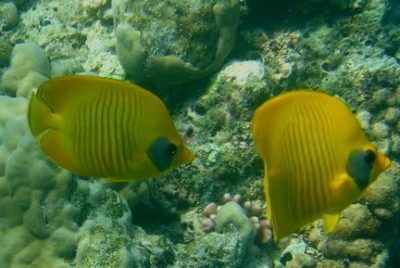
A pair of masked butterflyfish.
They have a much smaller mouth than the angelfish, which often protrudes out, enabling them to feed on single coral polyps without creating noticeable feeding scars.
Butterflyfish are usually seen in pairs. Unlike the angelfishes, the color pattern of juveniles is the same as the adults. There are two species often considered butterflyfish, even though they are in a different genus. These fish tend to aggregate above the reef and over coral heads, and they feed mostly on plankton. The most visible and approachable of these is the Red Sea bannerfish.
I’ve been fortunate on this expedition to witness the great diversity of reef fish. Partially because of the extensive amount of habitat and the remote location of the Farasan Banks, populations of reef fish are fairly healthy. But, we didn’t see as many sharks and other large pelagic as expected, except for frequent sightings of marlin jumping from the water. Sharks may be uncommon because we were not diving deep enough. As the water gets warmer they tend to spend more time deeper, where it is cooler. The water temperatures during our dives were certainly warmer in the southern Farasan Banks when compared to our first few days up north.
Sharks may also be uncommon due to their exploitation, primarily for the shark fin trade. Recent threats to other Red Sea fish populations include the aquarium fish trade and the live reef fish trade. Fortunately these fisheries have not yet reached the Farasan Banks, and Saudi Arabia has banned exports of aquarium fish.
What does seem to be on the increase, though, is the use of fish traps – something that was rarely reported only four years ago. A few days ago we approached a small vessel with over 150 fish traps. These fishermen were from Yemen, and had been fishing this area for the last year and a half. Remarkably, the Golden Shadow was the first large vessel they had seen over this time period.
For now, the high diversity and abundance of fish is one of the unique treasures of the Farasan Banks. As long as fishing pressure remains low, it will remain one of the premier spots for underwater viewing of these colorful and charismatic animals.

